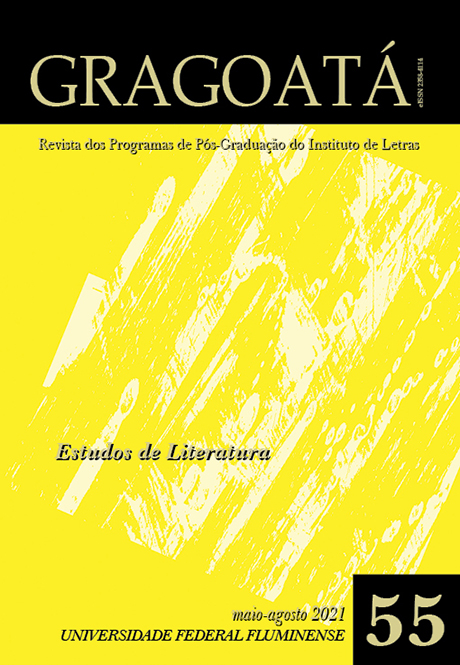Variações materiais, manutenções de forma e conteúdo: distopias infantojuvenis
DOI:
https://doi.org/10.22409/gragoata.v26i55.45650Palavras-chave:
Distopia. Gêneros literários. Gêneros discursivos. Literatura Infantojuvenil.Resumo
Este estudo visa legitimar as distopias enquanto um gênero discursivo que coloca criadores e auditório em diálogo profundo sobre as condições sociais em que vivem. Ele parte das distopias enquanto gênero literário com projeção na produção artística contemporânea direcionada ao público infantojuvenil, conectando objetos estéticos produzidos em diferentes materialidades, como cinema, romance e quadrinhos. Para melhor comparar objetos distintos entre si, coletamos como corpus distopias infantojuvenis de temática ambiental. A distopia, então, é uma narrativa contada com determinada estrutura e organização dos acontecimentos: há de início a descrição de um futuro catastrófico, mas possível; no seu decorrer, surgem indícios de como as coisas passaram do presente do leitor ao futuro proposto pela distopia, com culpabilização da humanidade; um final apaziguador; e, permeando tudo, um herói cuja identificação com o leitor é imediata. A estabilidade formal percebida nesses enunciados nos levou à teoria bakhtiniana, especialmente ao texto O problema do conteúdo, do material e da forma na criação artística (1924). Por não perceber o objeto estético fechado em sua materialidade, Bakhtin valoriza o conteúdo como indispensável, o qual se manifesta através de uma forma que se imprime sobre uma materialidade. Como a forma distópica descrita acima enuncia um conteúdo que se relaciona de maneira única com o exterior do enunciado, também discutimos o problema da materialidade e porque ela toma frente nas análises críticas de objetos artísticos ainda hoje. Concluímos que a distopia, como gênero discursivo, faz com que o objeto estético reverbere nos âmbitos éticos e cognitivos da sua realidade.Downloads
Downloads
Publicado
Edição
Seção
Licença
AUTORIZAÇÃO
Autores que publicam em Gragoatá concordam com os seguintes termos:
Os autores mantêm os direitos e cedem à revista o direito à primeira publicação, simultaneamente submetido a uma licença Creative Commons Atribuição 4.0 Internacional (CC BY 4.0), que permite o compartilhamento por terceiros com a devida menção ao autor e à primeira publicação pela Gragoatá.
Os autores podem entrar em acordos contratuais adicionais e separados para a distribuição não exclusiva da versão publicada da obra (por exemplo, postá-la em um repositório institucional ou publicá-la em um livro), com o reconhecimento de sua publicação inicial na Gragoatá.
A Gragoatá utiliza uma Licença Creative Commons - Atribuição CC BY 4.0 Internacional.











